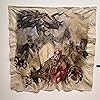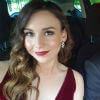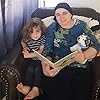To answer questions about
Maus II: A Survivor's Tale: And Here My Troubles Began,
please sign up.
Max Cano
Very insightful question, Juan. My understanding is that every animal embodiments in the books represent an allegory of a given social group or ethnicity. In the beginning animal identities are seen as stable and objective, but that changes later on. Through the text we have at least five animal representations: cats (predators, Nazis, or German in broad way), mice (Jewish people), pigs (Polish, and in general non-German caucasians), butterfly (Roma people or Gypsies), dogs (Americans). However, these easy classifications become more contentious throughout the book, hinting at a performance of belonging. I mean, these categories are not who you are or not only who you are, but an act towards other and towards yourself. In practice, identity can be an act of theatrics: how we behave so we are seen in a specific manner. For example, when the author feels an impostor syndrome, at the beginning of the second part, we wears a mask that depict his anxiety of not being a true representation of the Jewish community. Also, when Jewish characters need to pass unnoticed to save their lives and they pretend to be non-Jewish they wear pigs' masks. Furthermore, my favorite moment of contentious identities is when a German prisoner of one of the camps is seen both as a mouse and cat and depicted as such in a panel. He is a mouse for the Nazis and a cat for the other inmates: here identity is something imposed from the outside, a matter of perspective. I think that this use of masks and perspectives adds a very necessary distance towards human groupings, a healthy problematization of the artificiality of our easy classifications. In the end, all our categories for our fellow humans are nothing but masks, an act of performance not a truly act of being. For me, these moments save Spiegelmen from reinforcing the very classifications he aims at dismantling.
Sarah
All of the flashbacks and the storytelling from the father are animals, but when the author is trying to talk to the readers/ isn't specifically talking about the story then it shows him wearing masks.
Sara Batinić
I think it is because Nazis usually called Jews - 'dirty rats' (as people who are frequently scouring the city streets and sewers for any quarters they can find) because they thought that Jews never ever worked a day in their life and that they were just stealing others goods. In other book I found an information that Polish and Dutch people referred to Nazi soldiers as pigs (Schweine) so that would explain why are the people in the book portrayed as animals. When Jews (rats) are wearing masks, I guess the author is trying to tell us that they were pretending to be Nazis, I guess they were wearing coats without David's star or something similar
Jill Butler
Also, the "mice" wear "pig" masks when using fake Polish identities.
About Goodreads Q&A
Ask and answer questions about books!
You can pose questions to the Goodreads community with Reader Q&A, or ask your favorite author a question with Ask the Author.
See Featured Authors Answering Questions
Learn more






